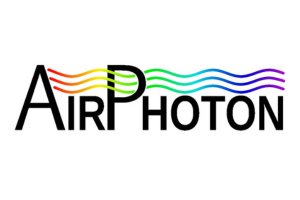
Air pollution, with its harmful effects on the health of all living beings and the environment, poses a serious challenge to communities worldwide. In 2021, The World Health Organization pointed to poor air quality as “responsible for hundreds of millions of years of healthy life lost” and that “almost all efforts to improve air quality can enhance climate change mitigation.” The need for accurate and efficient air quality monitoring solutions is critical – and AirPhoton is providing solutions.
AirPhoton began operations at bwtech in 2012. Co-founders Dr. Vanderlei Martins a physics professor and UMBC and Dr. Lorraine Remera research professor in the Dept. of Geography and Environmental Science, have been close collaborators in the science and technology of remote sensing and aerosols for decades. The two, along with AirPhoton COO Richard Kleidman, met at the NASA Goddard Space Flight Center in Greenbelt, MD in the mid 90’s. The company initially supplied instruments to the SPARTAN network to support their efforts to provide high quality data around the globe on air quality and human health.
Utilizing the research and experience of its founding scientists, AirPhoton offers optical and filter-based aerosol sampling systems, instrument design, manufacturing and consulting, training in the use of satellite data for climate and air quality applications, and satellite and in-situ data analysis. Today, AirPhoton’s instruments are measuring particulates across 5 continents.
In 2022, AirPhoton joined forces with GRASP, a developer of satellite software based in France, to form GRASP-Earth offering earth-observation hardware and software to international space agencies, commercial space services, and public sector agencies. The complementary talent, skills and resources of the two organizations allow GRASP-Earth to be at the forefront of creating innovative technology and analytics for the study of air pollution and Greenhouse gases from and space.
In April of 2023, GRASP -Earth launched a multi-angle, multispectral polarimeter, known as GAPMAP, on the ADLER2 cubesat, to retrieve atmospheric-composition products for air-quality applications. The GAPMAP instrument is based on technology developed by the Dr. Martins’ team at UMBC’s Earth and Space Institute. GAPMAP observations are presently considered to be the most capable passive remote sensing observations for monitoring aerosol and particulate pollution available today. In a recent statement, Dr. Martins said, “Seeing our vision materialize is very gratifying, not only for current but also for the coming results.”
Based on the instrument’s performance, GRASP is moving ahead with plans to establish a 10-satellite constellation by 2028 to provide high-quality observations of atmospheric particulates, clouds and surface properties. According to a recent GRASP press release, each cubesat will “surpass conventional space radiometers” by collecting data “with multiple viewing angles and polarization.” Observations of earth will be collected in four wavelengths, five viewing angles, and three polarization states.
By harnessing the power of technology and innovation, AirPhoton and GRASP-Earth are enabling scientists, communities, and governments around the world to make informed decisions and take proactive steps toward reducing air pollution and protecting health and the environment.
